The Izu Islands
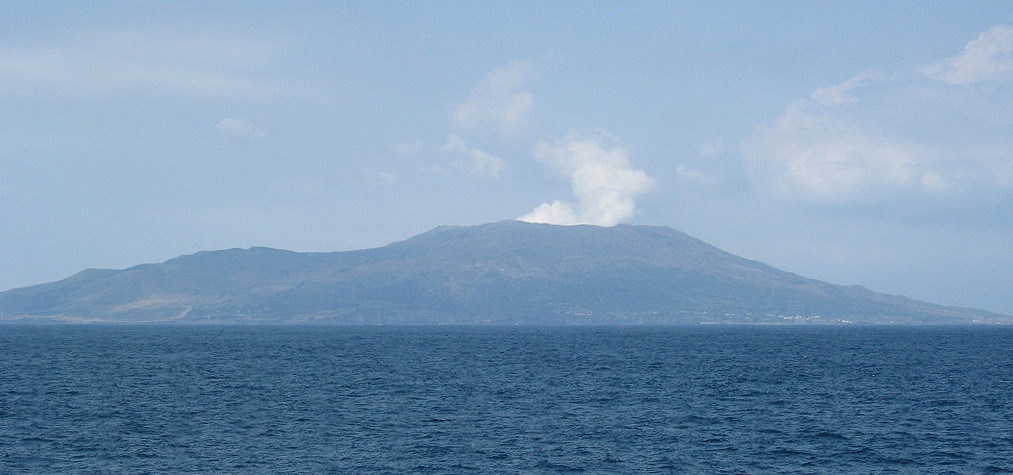
The Tachibana-maru, operated by Tokai Kisen Ferries, leaves Takeshiba-sanbashi, near JR Hamamatsucho Station in central Tokyo, every night at 22:30 (weather permitting). Arrive at the ferry port to buy your ticket no later than 22:00. https://www.tokaikisen.co.jp/english/
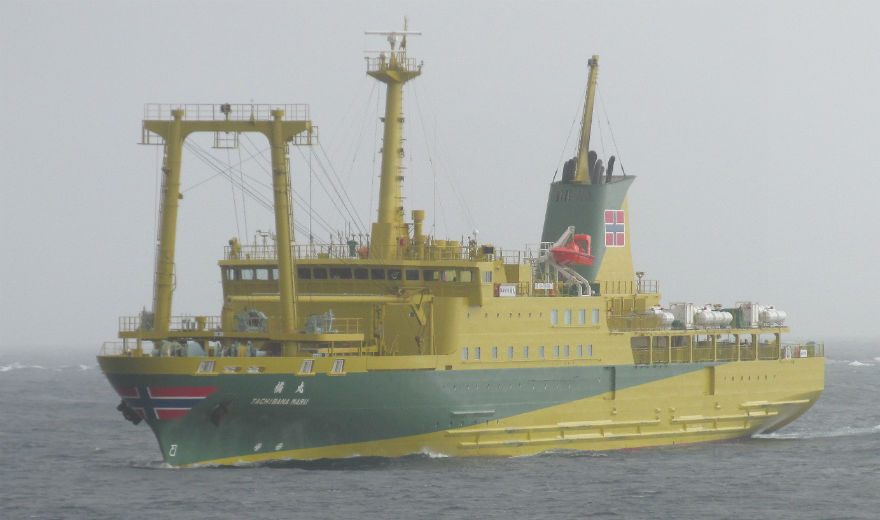 The ferry arrives at Miyake-jima just before 05:00 and at Hachijo-jima at about 09:00. Note that the ferries are often cancelled during typhoons and stormy weather. If the ferry does not sail from Tokyo, then there is no service back from the islands on the following day. If you are already on the islands, then this means that you will need to wait there until ferry services resume, or you will need to fly back to Tokyo.
The ferry arrives at Miyake-jima just before 05:00 and at Hachijo-jima at about 09:00. Note that the ferries are often cancelled during typhoons and stormy weather. If the ferry does not sail from Tokyo, then there is no service back from the islands on the following day. If you are already on the islands, then this means that you will need to wait there until ferry services resume, or you will need to fly back to Tokyo.
There are three or four flights per day to and from Miyake-jima (New Central Air Service from Chofu Airport in west Tokyo), and Hachijo-jima (ANA from Haneda Airport in Tokyo), but flights cost at least twice as much as the ferry and of course there are no opportunities to look for seabirds.
Tokai Kisen has a reservation system (Tel. 03-5472-9999), but there is really no need to book ahead of time unless: a) you wish to reserve a cabin or bunk-bed, or b) you are travelling at peak times such as New Year, Golden Week (late-April and early May), or O-bon (mid-August). During the summer months, especially on a Friday or Saturday night, many people head out of Tokyo for the weekend and the ferry can be quite busy.
There is a separate ferry, departing at around 22:00, for Oshima, Shikine-jima, Nii-jima and Kozu-shima and the other Izu islands. Few birders will likely want to go there, although, of course, there is always the chance of finding interesting species on the other islands, all of which must be chronically underwatched when compared to Miyake-jima.
For birders who only have one day for this pelagic adventure, there are two itineraries that can be achieved over the course of 22 hours.
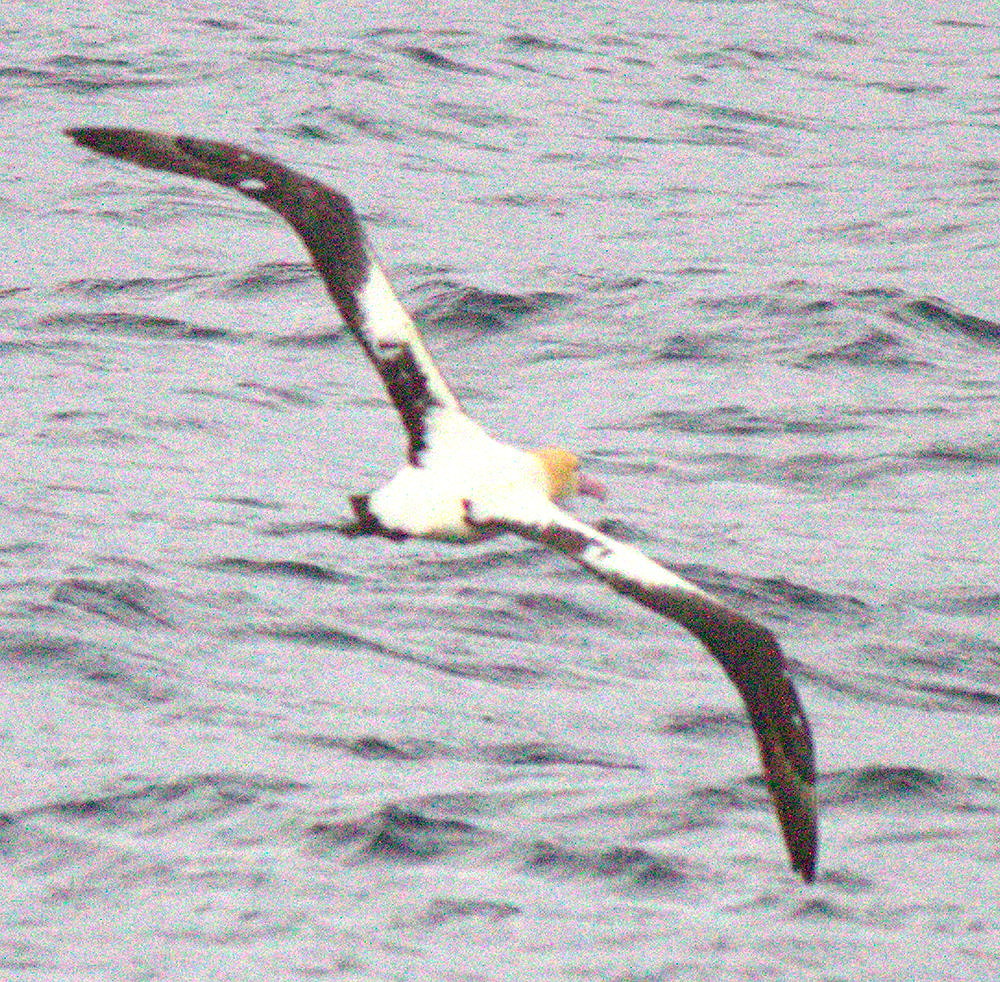 1) Take the ferry all the way to Hachijo-jima. Spend about 30 minutes on the island close to the harbour (while cargo containers are offloaded and onloaded) then buy a ticket and re-board for the return to Tokyo. If you are lucky, it is possible to see Izu Thrush in gardens near the port.
1) Take the ferry all the way to Hachijo-jima. Spend about 30 minutes on the island close to the harbour (while cargo containers are offloaded and onloaded) then buy a ticket and re-board for the return to Tokyo. If you are lucky, it is possible to see Izu Thrush in gardens near the port.
This route maximises seawatching opportunities. It can be good especially during late winter and early spring for albatrosses, including Short-tailed Albatross, or later in the season for petrels.
2) The alternative – and perhaps the most productive, birdwise – is to go only as far as Miyake-jima, spend a few hours on the island (roughly 05:00–13:00), then catch the ferry as it returns from Hachijo-jima and Mikura-jima and travel back to Tokyo.
On the returning ferry from the islands you will arrive in Tokyo at about 20:00 (the exact time depends on the wind and sea conditions. During the peak summer months the ferry makes a stop to pick up passengers at Oshima.
Aboard the ferry, the large, shared, second-class Japanese-style cabins (sleeping on the carpeted open area) on the lower deck are suitable for most birders, both ways, as most of the time during daylight hours you will want to be out on deck.
At about ¥9,000 per person one way (to Hachijo-jima) this is the cheapest option. The next alternative is a bunk bed (about ¥13,500 per person from Tokyo to Miyake-jima), and in the class above, expensive cabins (none of which are en-suite). A two-person cabin will cost ¥25,000 one way per person (no refreshments are included). There are also 6-person and 10-person cabins. Cabins must be reserved well in advance.
Unless you have a prior reservation you cannot buy a return ticket, so buy a one-way ticket when you arrive at the ferry port at Takeshiba-sanbashi, and then another one-way ticket on the island just before boarding for the return trip.
Sometimes, when weather conditions in the islands are unfavourable, your ticket will be stamped with “Sold subject to conditions” – meaning that it might not be possible to dock at a certain island (especially Mikura-jima) due to high waves or strong winds.
If you are unable to disembark at your destination because of poor weather conditions, forcing the ferry to return to Tokyo, you will receive a full refund – in essence, a free pelagic!
Coin-operated showers are available on board, and blankets can be rented for ¥100 each. Hot water for drinks and cup noodles is available, but you must bring your own cup and beverage. A restaurant is open at meal times, and food such as hot ramen noodles and curry-rice are available (buy a ticket from the ticket vending machine at the entrance to the restaurant). However, it is probably best to take your own food and drink (enough for one breakfast and one lunch). There are a couple of convenience stores near the ferry port in Tokyo, and several shops on the islands. On Hachijo-jima there is even a bakery – Boulangerie, in Mitsune (Tel: 04996-2-3448), but it is not close to the harbour so, unless you happen to be staying on the island overnight, you will not have time to reach it. Around the ship, additional vending machines sell a range of hot and cold drinks, beer, cup noodles, as well as ice cream. In order to buy beer from the vending machine, you will need to insert a Japanese driver's license to prove your age.
There are three ports on Miyake-jima and two on Hachijo-jima. The port used by the ferry depends on the wind direction and strength. Normally, the ferry arrives at Sokodo port on the east coast of Hachijo-jima, and at Sabigahama port on the west coast of Miyake-jima, but always check the departure port for changes to the schedule.
When conditions dictate, the ferry will call in at Yaene port on the west coast of Hachijo-jima, and on Miyake-jima it may use either Miike port on the east coast or Igaya port in the northwest (although the latter is rarely used).
On Miyake-jima, the staff at Akakokko-kan Nature Centre (Tel: 0499-46-0410), the Izu Islands Tourist Information Centre (Tel: 0499-45-1144; where usually somebody can speak some English), bus and taxi drivers and, of course, the Tokai Kisen ferry company office (Tel: 0499-45-0221), will know by 12:00 at the latest (11:00 at the earliest) from which port the ferry will depart. Just remember to confirm the departure port at around midday to avoid disappointment. If you begin walking from Tairo-ike at about 11:00, this should give you enough time to get to either Miike or Sabigahama ports (about 5 km either way), and there is always a bus going to the departure port (check the times on bus stop signs).
Accommodation is plentiful on both islands, but it is recommended that you have a reservation if you plan to stay overnight. There is a camp site close to Sokodo port on Hachijo-jima.
It is possible to take the overnight ferry to Miyake-jima, bird until midday around Tairo-ike (Tairo Pond), then go to the airport and fly back to Tokyo (Chofu airport) during the afternoon. Or go to Miyake-jima, bird all day on the first day, and the following morning (following an overnight stay), then leave at lunchtime on your second day for Tokyo. The ferry back from the islands arrives into Tokyo (Takeshiba ferry terminal) at around 20:00.
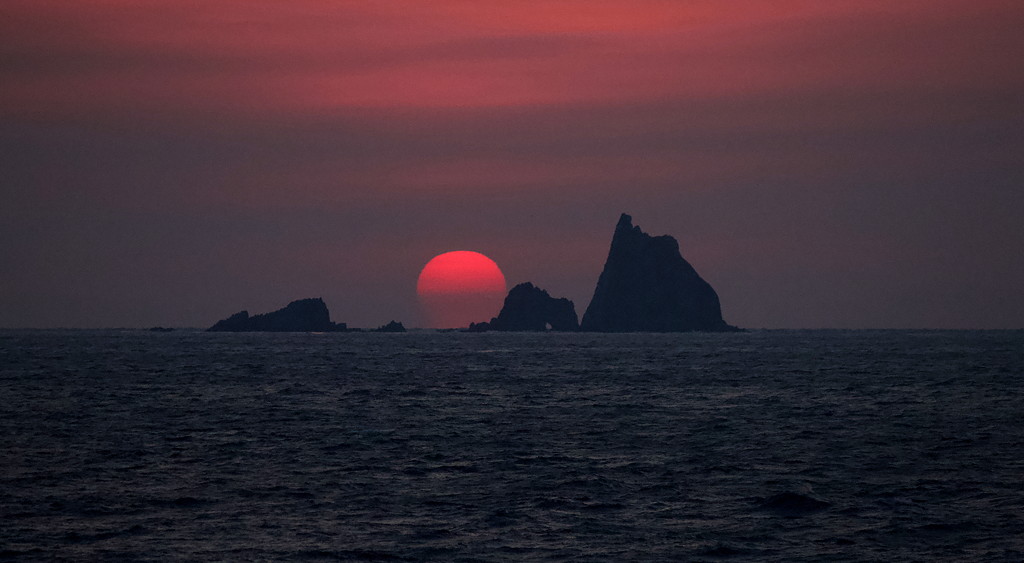
Miyake-jima
If you decide to go to Miyake-jima, you will have from approximately 05:00 until 12:30 for birdwatching – enough time to search for the endemics around Tairo-ike: Izu Thrush, Owston's Tit, Iijima's Warbler (in summer), and Izu Robin, as well as Japanese (Black) Woodpigeon, White's Thrush, and the endemic island subspecies of Japanese Pygmy Woodpecker, Eurasian Wren and Japanese White-eye.
During the summer months, Pleske's Warbler can be found in suitable habitat (long grass and shrubs) around Shinmyo-ike-ato on the south coast, the headland/lighthouse area just north of Miike port, just north of Miike port on the west coast, the lava field area just north of Ako port on the west coast, and around around Izu-misaki (Cape Izu) on the northwest coast.
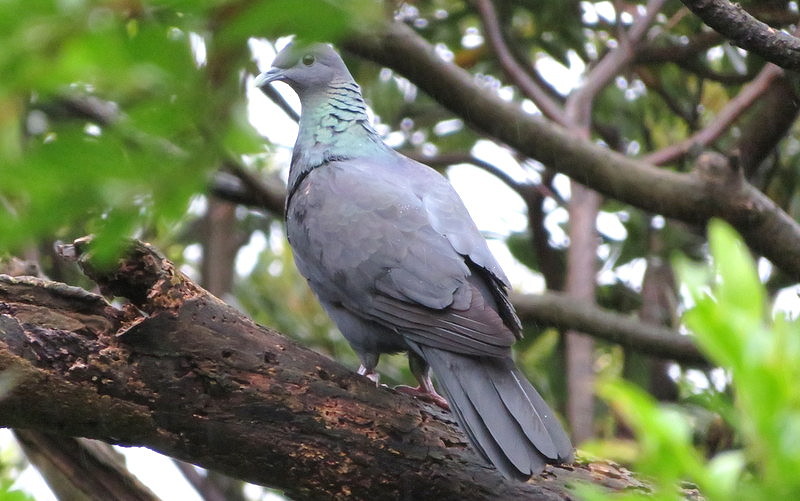 Public transport (bus or pre-ordered taxi) will be waiting when the ferry arrives at whichever port. One bus goes clockwise around the island, the other anticlockwise, so check which one is headed to the Tairo-ike bus stop. For the return, there are infrequent buses (check departure times on the signs at the bus stops), but the easiest thing to do is to walk – from Tairo-ike to either Sabigahama on the west coast, or Miike on the east, it will take about 60–90 minutes. If you travel in midwinter, you'll just have to hang out at the bus shelter at Tairo-ike until it gets light.
Public transport (bus or pre-ordered taxi) will be waiting when the ferry arrives at whichever port. One bus goes clockwise around the island, the other anticlockwise, so check which one is headed to the Tairo-ike bus stop. For the return, there are infrequent buses (check departure times on the signs at the bus stops), but the easiest thing to do is to walk – from Tairo-ike to either Sabigahama on the west coast, or Miike on the east, it will take about 60–90 minutes. If you travel in midwinter, you'll just have to hang out at the bus shelter at Tairo-ike until it gets light.
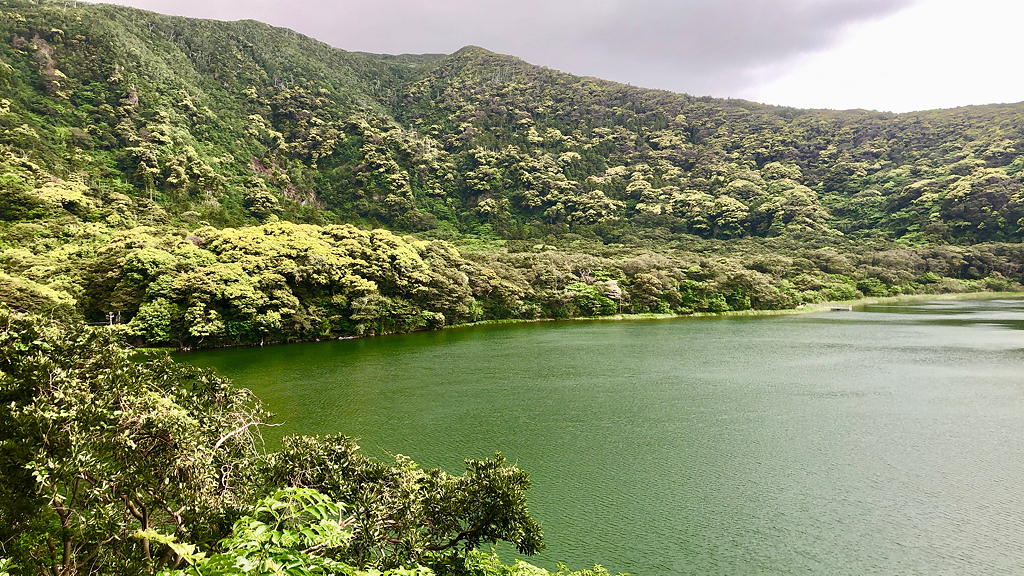 Tairo-ike (Tairo Pond) provides the best birding on the island. The forests around the lake hold all of the endemic birds and the lake itself attracts migrating egrets, herons and waterfowl.
Tairo-ike (Tairo Pond) provides the best birding on the island. The forests around the lake hold all of the endemic birds and the lake itself attracts migrating egrets, herons and waterfowl.
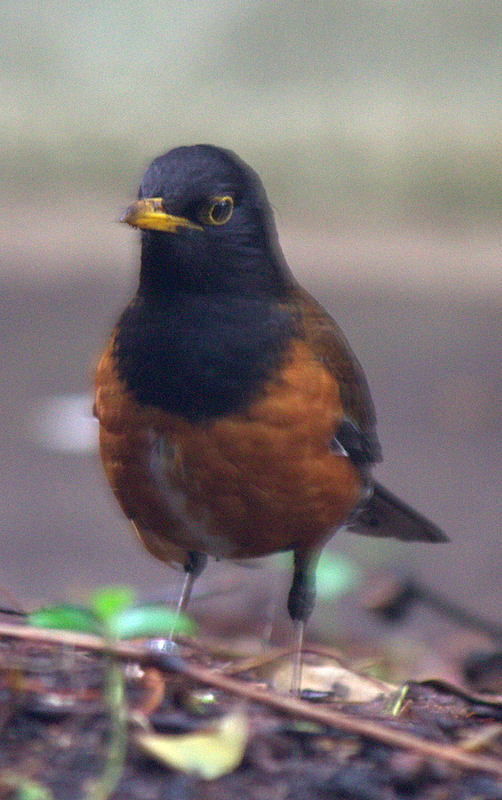 At Tairo-ike the rangers at Akakokko-kan, the Miyake-jima Nature Center, will be able to give you some information about birds and birding sites on the island – there is usually someone who can speak a little English. They will also call a taxi for you if you ask nicely! Look around the center for Izu Thrush and Izu Robin.
At Tairo-ike the rangers at Akakokko-kan, the Miyake-jima Nature Center, will be able to give you some information about birds and birding sites on the island – there is usually someone who can speak a little English. They will also call a taxi for you if you ask nicely! Look around the center for Izu Thrush and Izu Robin.
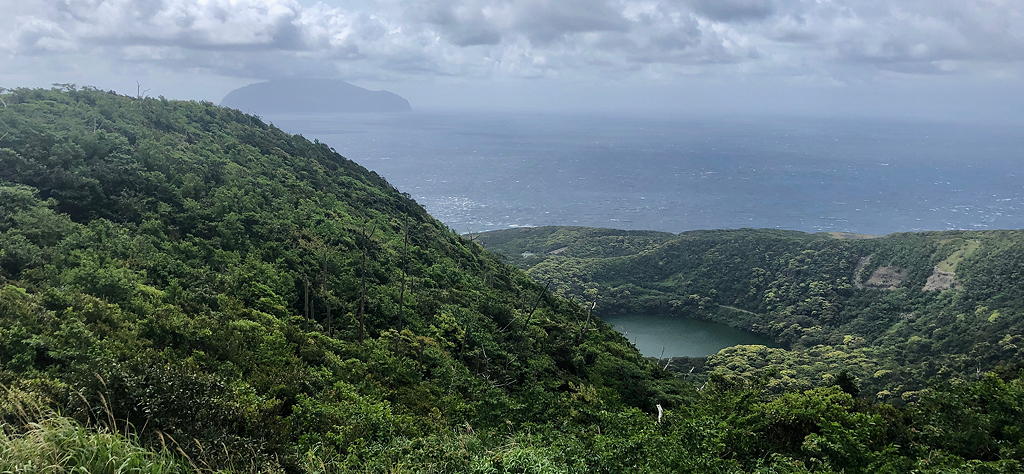 Not far — as the Ijima's Warbler flies — above Tairo Pond is an observation platform (大路池展望台 Map: 34.065441, 139.526176) which will give you a different perspective of the lake, one which few people ever see.
Not far — as the Ijima's Warbler flies — above Tairo Pond is an observation platform (大路池展望台 Map: 34.065441, 139.526176) which will give you a different perspective of the lake, one which few people ever see.
To get there, retrace your steps from the nature centre car park and drive/walk east along Miyake Isshu-doro towards Tsubota village. At Michinosawa bridge, between the agricultural/forestry building (農林合同庁) and the high school, is the entrance to a narrow lane on the mountain-side of the road (Map: 34.057484, 139.535237). The sign reads "Tsubota rindo 坪田林道” and beside it a map shows the route to the upper levels of the mountain.
From the junction it is about a 45–60 minute hike up to the platform, or just a 5-minute drive if you have a vehicle.
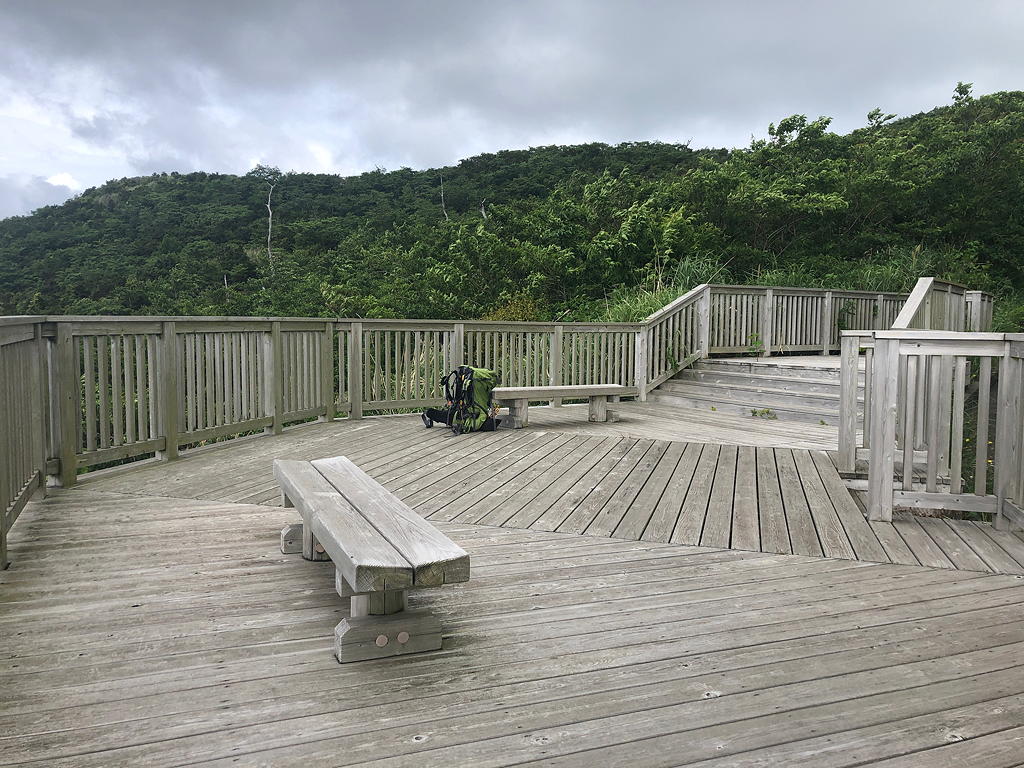 From mid April onwards, for a month or more, the songs of Ijima's Warblers and Izu Robins make for a very enjoyable early morning hike. There are also Black Woodpigeons and Owston's Tits here. However, the forests will be mostly silent during the autumn and winter.
From mid April onwards, for a month or more, the songs of Ijima's Warblers and Izu Robins make for a very enjoyable early morning hike. There are also Black Woodpigeons and Owston's Tits here. However, the forests will be mostly silent during the autumn and winter.
As the purpose of hiking to the observation deck is to enjoy the view, there is little point in hiking up there on a rainy or foggy day, but, on a calm and sunny late spring morning or a still autumn afternoon, you will be well rewarded for your efforts!
There are no toilet facilities on this hike; the nearest toilets are at Akakokko-kan or next to the post office in Tsubota village.
Right in the centre of Miyake-jima is Mt Oyama, an active volcano, which erupted as recently as 2000, forcing everyone to be evacuated from the island for several years. Take precautions and for your own safety do not go to the upper levels due to the poisonous gases that are constantly being emitted. There is no forest – and hence no birds – at the higher elevations, so there is no need to go up there. However, Pacific Swift feed high over the island, but they can be seen from lower elevations such as headlands or from the road that circles Miyake-jima.
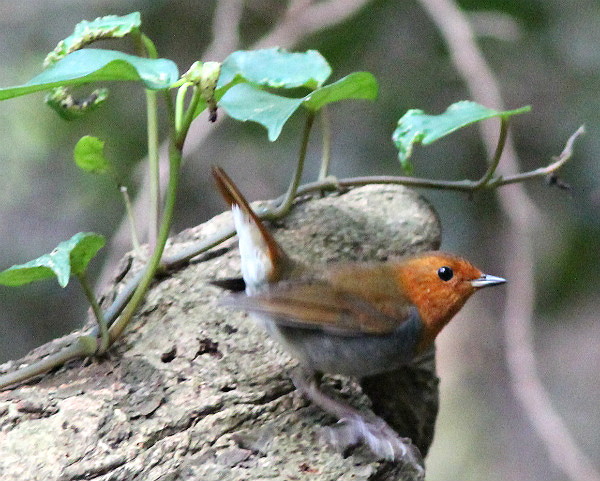 Some of the more unusual birds that have been recorded on Miyake-jima include: Whooper Swan, Greater White-fronted Goose, Japanese Night Heron, Fairy Pitta and Asian Koel. The diversity of rare migrants, and even vagrants, reported here makes it well-worth a visit during migration season.
Some of the more unusual birds that have been recorded on Miyake-jima include: Whooper Swan, Greater White-fronted Goose, Japanese Night Heron, Fairy Pitta and Asian Koel. The diversity of rare migrants, and even vagrants, reported here makes it well-worth a visit during migration season.
Accommodation:
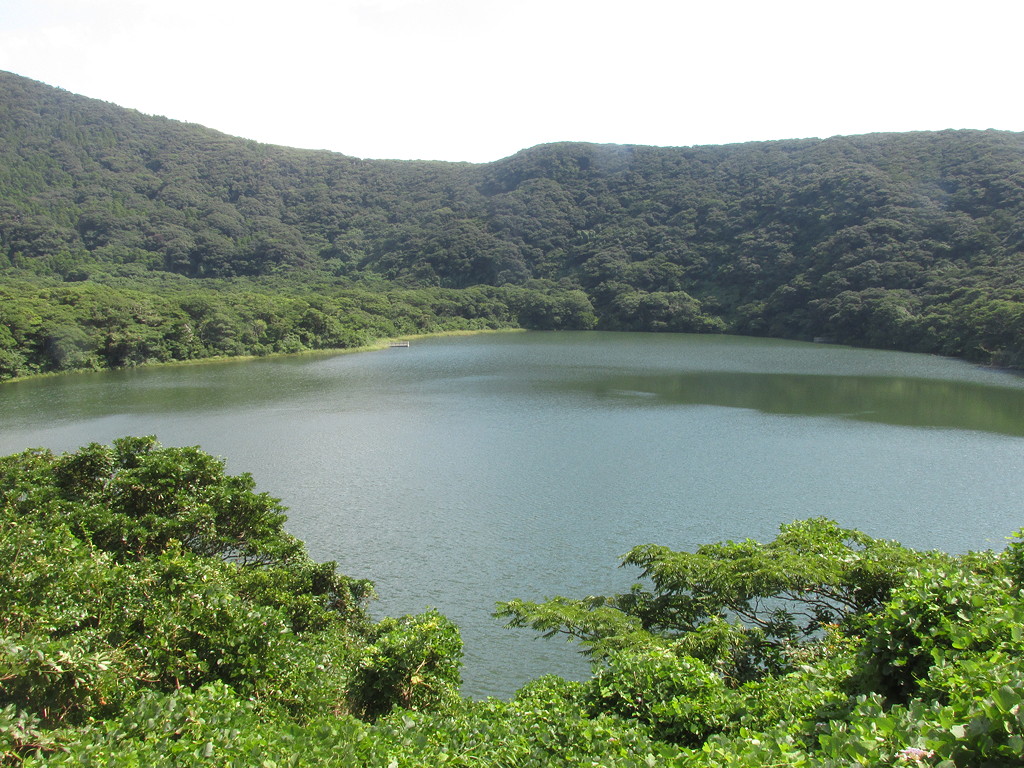 There are many minshuku (Japanese-style inns) on the island for overnight accommodation, as well as tourist hotels, and there is also a hot spring.
There are many minshuku (Japanese-style inns) on the island for overnight accommodation, as well as tourist hotels, and there is also a hot spring.
1) Minshuku Snapper (Map 34.119269, 139.544175) is situated on the northeast coast, quite a distance from Tairo-ike. Get off at Minowa bus stop. Tel: 04994-2-1433. http://www.snapper-d.com/
Japanese Murrelet: During spring (from late March until late May), boat tours (c3 hours) are organised by Minshuku Snapper to view murrelets around their breeding area on Sanbondake. Cost: ¥9,000/person. Reservation required.
2) Minshuku Nippana-so (Map: 34.051987, 139.531214) is about a 10-minute walk from Tairo Pond.
Tel: 04994-6-1547; Fax: 0499-46-1547.http://miyake287.com/
3) Hotel Kairaku (Map: 34.068150, 139.482680) is an orange building opposite the small supermarket in Ako village, just five minutes' walk from Sabigahama ferry port. Tel: 0499-45-0131. http://www.kairaku.co.jp/
There are also a few places to stay in Tsubota village, such as: Minshuku Oshidori and Minshuku Tsukuba.
Hachijo-jima
If you stay on Hachijo-jima the best birding sites are the Hachijo Botanical Gardens (33.111443, 139.784851; where rangers at the Hachijo-jima Visitor Centre have some knowledge of birds on the island), Izumi Water Park (Hotaru Suiren; Map: 33.107987, 139.801658), and the forested slopes of Mt Mihara or Mt Hachijo-Fuji.
Izu Thrush can be seen in gardens around the island, and also in the forests on the sides of the two mountains. Iijima's Warbler is common in the forests from May through August, and good numbers of Izu Robin can be seen or heard, especially in the very early morning when they often come out onto the road or trails to feed.
At the top of Mihara-san, White's Thrush can be seen early in the morning, and Pleske's Warbler has been recorded. Pacific Swift is often overhead, and during migration look for White-throated Needletail among them.
Hachijio-jima is covered in thick forest so access is limited, but there are hiking trails on both mountains and there are several roads. Free hiking maps are usually available at the tourist information counter at Sokodo ferry port.
Offshore from the northwest side of Hachijojima is Mujin-to, and soaring triangle-shaped remains of an old volcano. In recent years a small colony of Black-footed Albatrosses has been established there.
Unusual birds that have been seen on the island include: Japanese Night Heron, Oriental Plover, Oriental Pratincole, Naumann's Thrush and Japanese Waxwing.
Accommodation:
There are many minshuku/ryokan, as well as tourist hotels, on Hachijo-jima providing overnight accommodation. There are also several hot springs on the southeast side of the island.
1) Sokodo-so (Map: 33.122138, 139.815025), is a friendly minshuku just five minutes walk from Sokodo port. Tange-san and his wife can speak some English and they are well acquainted with birdwatchers. The cost is approximately ¥8,500 per person (dinner/breakfast included).
Tel. 0499-62-0092. http://www.sokodo-so.com/
2) Resort Sea Piros (Map: 33.123365, 139.815362) is reasonably-priced accommodation very close to Sokodo port. Tel: 0499-62-5757. http://www.seapiross.co.jp/
3) Hotel Mantenbo (Map: 33.093140, 139.781433)
Tel.: 0499-62-7250. http://mantenbo.net/
Seawatching from the ferry can be exciting or boring, depending on the wind and the season.
During the late winter/early spring albatrosses are often common, and there are usually concentrations in waters off the southeast, east or northeast side of Oshima, nicknamed the "Oshima Triangle". By far the commonest species is Laysan Albatross (sometimes several hundred birds can be seen), and there are smaller numbers of Black-footed Albatross and, if you are lucky, the most sought after of them all, a few Short-tailed Albatross.
The albatrosses are winter breeders further south – on Torishima and in the Ogasawara archipelago – and birds around the Izu Islands are either feeding birds or birds dispersing after the breeding season. Normally, except for the narrow channel between Miyake-jima and Mikura-jima, albatrosses can be seen anywhere during the trip, but off Oshima numbers appear to be consistently high.
Streaked Shearwaters often gather in tens of thousands offshore from Miyake-jima, and in the early morning form a dense ring around the island as they move iover the ocean.
During the summer and autumn Sooty Shearwater and Short-tailed Shearwater appear in varying numbers, and Tristram's Petrel can be seen too. Bulwer's Petrel and Providence Petrel turn up during the summer months, and occasionally Bonin Petrel is recorded in the area.
During the spring skuas move through – Long-tailed Skua and Pomarine Skua are the commonest. During the summer months there is a chance of South Polar Skua. Both Red-necked Phalarope and Red Phalarope can also be seen in small numbers.
Off the west coast of Miyake-jima look for Japanese Murrelet on the sea. Small groups of birds can often be seen, especially in calmer weather, sitting on the surface of the sea or flying away as the ferry approaches. They breed in good numbers on Sanbon-dake, the stacks visible a few kilometers directly west of Sabigahama port.
As for cetaceans, Sperm Whale and Humpback Whale are occasionally seen during the winter and spring, and most of the smaller cetaceans – especially around Mikurajima – are Bottle-nosed Dolphin. Other species recorded include: Short-finned Pilot Whale and Pacific White-sided Dolphin. Flying fish are common at certain times of the year, and in the sea near the ferry ports Green Sea Turtle can often be seen at the surface.
Aogashima
About two hours by small ferry south of Hachijojima is the island of Aogashima. There is a daily boat service (leaving Yaene port on the west coast of Hachijo-jima at 10:00), but the boat to and from the island is often cancelled because of high waves.
On the island there are several minshuku.
Birdlife is much the same as on Hachijo-jima and Miyake-jima. Between Aogashima and Hachijo-jima there is a helicopter service. For more information on visiting the island visit the Aogashima tourism website.
http://www.vill.aogashima.tokyo.jp/tourism/stay.html
Mikura-jima
Mikurajima is a small island lying between Miyake-jima and Hachijo-jima. There are several minshuku providing accommodation, but as there is no airport there is no way of getting on or off the island if the ferry does not stop there (there is normally a daily service). One attraction at Mikura-jima is swimming with dolphins. Birding is likely to be the same as on Hachijo-jima and Miyake-jima. Look for Brown Booby around the island, particularly off the northeast/east coasts, and Japanese Murrelet sometimes can be seen between Mikura-jima and Miyake-jima.
Unusual birds seen there include Masked Booby and Providence Petrel.
© 2021 Mark Brazil & Chris Cook
Last updated: 20210605
